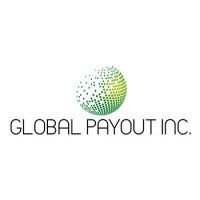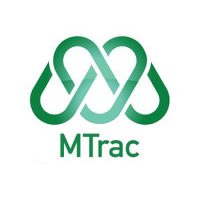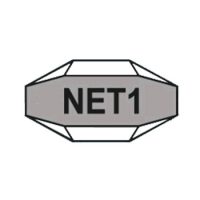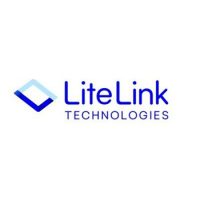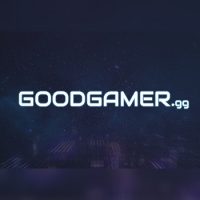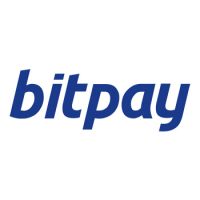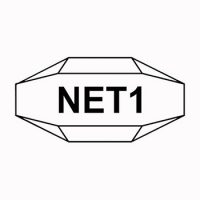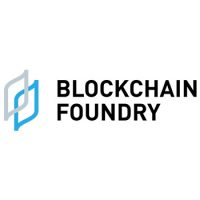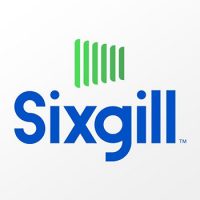Blockchain Press Releases
Wearable Computing Market to Hit $244.43 Billion by 2030: Grand View Research, Inc.
SAN FRANCISCO, Aug. 17, 2023 /PRNewswire/ — The global wearable computing market size is anticipated to reach USD 244.43 billion by 2030, registering a CAGR of 20.2% from 2023 to 2030, according to a new report by Grand View Research, Inc. The market has been experiencing significant growth in recent years due to technological advancements and increasing consumer interest. The rise in popularity of fitness trackers and smartwatches demonstrates the growth of the market. Moreover, wearable devices have gained popularity across various sectors, including fitness and healthcare, entertainment, and industrial applications. Wearable devices are being increasingly adopted in the healthcare industry.
Key Industry Insights & Findings from the report:
- The fitness trackers product type segment dominated the market with a share of 35.0% in 2022. Fitness trackers are wearable devices that monitor and track fitness-related metrics, such as steps taken, distance traveled, calories burned, heart rate, sleep patterns, and more.
- The Bluetooth connectivity segment dominated the market with a revenue share of 37.4% in 2022. Bluetooth technology enables wireless communication and data transfer between wearable devices and other devices, such as smartphones, tablets, and computers.
- By application, the consumer segment dominated the market with a revenue share of 62.6% in 2022 due to its ability to enhance personal experiences, track fitness, and health metrics, and provide convenient access to information and communication.
- North America established a strong regional position in the global market with a 40.7% share in 2022. The region has a well-developed ecosystem for wearable technology, including a mature supply chain, a strong retail presence, and extensive distribution networks
Read full market research report with ToC & latest insights, “Wearable Computing Market Size, Share & Trends Analysis Report By Connectivity (Wi-Fi, 4G/5G), By Product Type (Fitness Trackers, Smart Watches), By Application (Consumer, Non-consumer), By Region, And Segment Forecasts, 2023 – 2030”, published by Grand View Research.
Wearable Computing Market Growth & Trends
For instance, wearable ECG monitors, continuous glucose monitors, and smart insulin pens help patients manage their conditions and provide healthcare professionals with real-time data for monitoring and diagnosis. This expansion of medical wearables indicates market growth in the healthcare sector. Moreover, wearable computing has also made its way into fashion and accessories. Designers and brands collaborate with technology companies to create smart garments, jewelry, and accessories embedded with sensors and connectivity. These fashionable wearables combine technology and style, catering to a growing consumer demand for wearable devices that blend seamlessly into their lifestyles.
For instance, in November 2020, Samsung Electronics Co., Ltd. partnered with fashion designer Thom Browne, Inc., a fashion brand based in New York, to introduce a limited edition of the Samsung Galaxy Z Fold 2 smartphone. The collaboration aimed to bring together technology and high fashion, with the device featuring a custom design by Thom Browne, including signature colors, wallpapers, and custom app icons. The adoption of Augmented Reality (AR) and Virtual Reality (VR) devices is rising. Products like the Oculus Quest VR headset and Microsoft HoloLens AR headset have gained popularity, indicating the growth of wearables in the entertainment and gaming industries. These devices offer immersive experiences and have opened new opportunities for wearable computing.
For instance, HoloLens is an AR headset developed by Microsoft that overlays digital information in the real world, enabling applications like remote assistance, architectural visualization, and industrial training. Wearable computing has applications in the manufacturing, logistics, and maintenance industries. Devices like smart glasses with AR overlays provide workers with hands-free access to information, instructions, and remote assistance. This improves efficiency and safety in industrial settings, showcasing the growth potential of wearable computing in the industrial sector. For instance, Bose Corp., based in the U.S., introduced Bose Frames, an audio sunglass with Bluetooth connectivity. They allow users to wirelessly connect to their smartphones and enjoy music, make calls, and access virtual assistants without needing traditional headphones or earbuds.
Wearable Computing Market Report Scope
|
Report Attribute |
Details |
|
Market size value in 2023 |
USD 67.47 billion |
|
Revenue forecast in 2030 |
USD 244.43 billion |
|
Growth rate |
CAGR of 20.2% from 2023 to 2030 |
|
Base year for estimation |
2022 |
|
Historical data |
2017 – 2021 |
|
Forecast period |
2023 – 2030 |
Wearable Computing Market Segmentation
Grand View Research has segmented the global wearable computing market based on product type, connectivity, application, and region
Wearable Computing Market – Product Type Outlook (Revenue, USD Million, 2017 – 2030)
- Smart Watches
- Smart Jewelry
- Fitness Trackers
- Body-worn Cameras
- Head Mount Displays
- Others
Wearable Computing Market – Connectivity Outlook (Revenue, USD Million, 2017 – 2030)
- Bluetooth
- Wi-Fi
- 4G/5G
- Others
Wearable Computing Market – Application Outlook (Revenue, USD Million, 2017 – 2030)
- Consumer
- Non-consumer
Wearable Computing Market – Regional Outlook (Revenue, USD Million, 2017 – 2030)
- North America
- U.S.
- Canada
- Europe
- UK
- Germany
- France
- Asia Pacific
- China
- India
- Japan
- South Korea
- Australia
- Latin America
- Brazil
- Mexico
- Middle East & Africa
- UAE
- Saudi Arabia (KSA)
- South Africa
List of Key Players in Wearable Computing Market
- Apple Inc.
- Fossil Group
- Garmin Ltd.
- Google LLC
- NIKE, Inc.
- Samsung Electronics Co., Ltd.
- Sony Corp.
- Sensoria
- Huawei Technologies Co.
- Xiamoi Inc.
Check out more related market research studies published by Grand View Research:
- Wearable Payments Devices Market – The global wearable payments devices market size is expected to reach USD 80.39 billion by 2028, according to a new report by Grand View Research, Inc. It is expected to expand at a CAGR of 29.8% from 2021 to 2028. Over time, payment systems have adapted to suit the needs of customers, such as increased convenience and reduced time while making payments. The growing popularity of contactless payment technology, coupled with the increasing adoption of wearable devices, such as smartwatches for contactless payments, is expected to fuel the market growth over the forecast period.
- Enterprise Wearable Market – The global enterprise wearable market is expected to reach USD 22.3 billion by 2025, according to a new study conducted by Grand View Research, Inc. The high demand for enterprise wearable devices in the Asia Pacific region is anticipated to drive industry growth over the next decade. The aging population and rising chronic diseases, such as coronary heart diseases and diabetes, in countries such as China, India, and Japan would drive the demand for wearable technology in the region.
- Cognitive Computing Market – The global cognitive computing market size is projected to reach USD 225.33 billion by 2030, registering a CAGR of 27.6% from 2022 to 2030, according to a new study published by Grand View Research, Inc. The surge in demand for cognitive computing technology comes from an increased need for making better decisions, transforming industries, and democratizing expertise. The technology has become sought-after among decision-makers to handle the massive amount of data and iterative analytics. Industry leaders anticipate the use of cognitive computing systems will gain ground from the rising prominence of machine learning and natural language processing.
Browse through Grand View Research’s Next Generation Technologies Industry Research Reports.
About Grand View Research
Grand View Research, U.S.-based market research and consulting company, provides syndicated as well as customized research reports and consulting services. Registered in California and headquartered in San Francisco, the company comprises over 425 analysts and consultants, adding more than 1200 market research reports to its vast database each year. These reports offer in-depth analysis on 46 industries across 25 major countries worldwide. With the help of an interactive market intelligence platform, Grand View Research Helps Fortune 500 companies and renowned academic institutes understand the global and regional business environment and gauge the opportunities that lie ahead.
Contact:
Sherry James
Corporate Sales Specialist, USA
Grand View Research, Inc.
Phone: 1-415-349-0058
Toll Free: 1-888-202-9519
Email: [email protected]
Web: https://www.grandviewresearch.com
Grand View Compass | Astra ESG Solutions
Follow Us: LinkedIn | Twitter
Logo: https://mma.prnewswire.com/media/661327/Grand_View_Research_Logo.jpg
![]() View original content:https://www.prnewswire.co.uk/news-releases/wearable-computing-market-to-hit-244-43-billion-by-2030-grand-view-research-inc-301903486.html
View original content:https://www.prnewswire.co.uk/news-releases/wearable-computing-market-to-hit-244-43-billion-by-2030-grand-view-research-inc-301903486.html

Blockchain
Ethereum ETFs Aren’t Blockchain But Is A Revolutionary Tech: Top 6 Amazing Reasons To Invest In Them
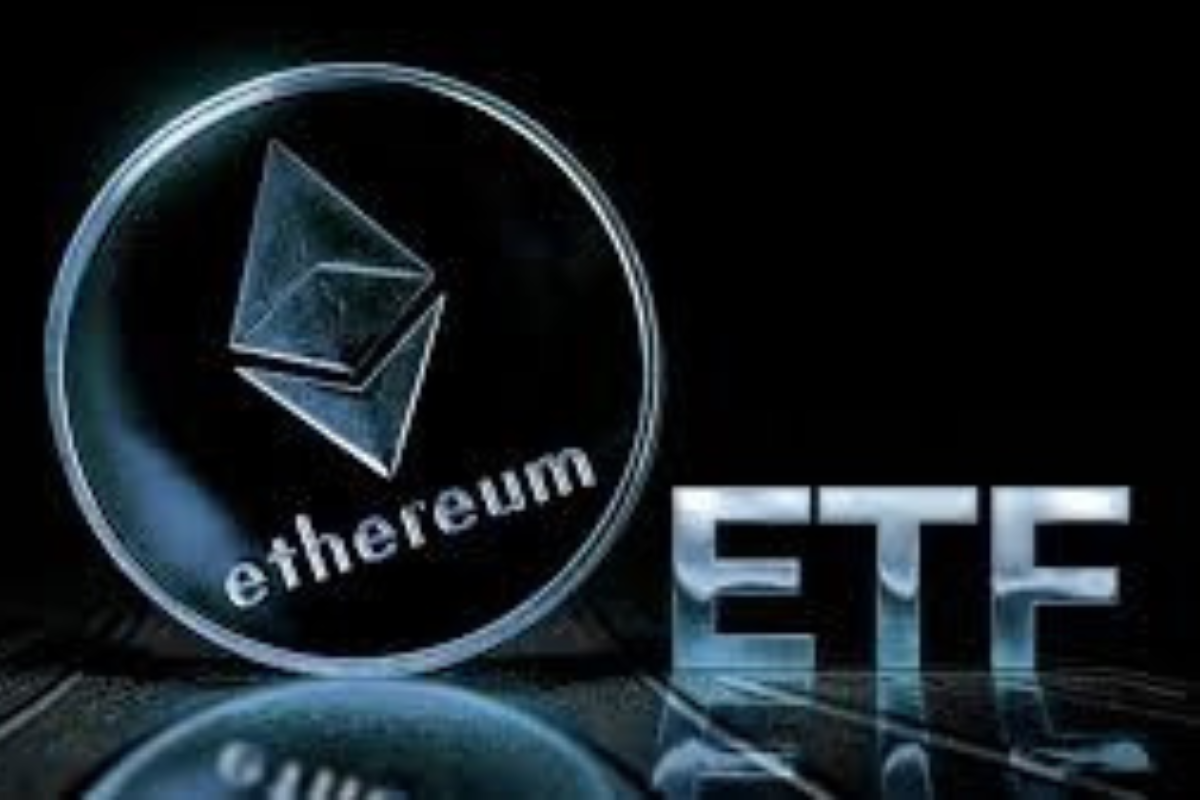
The financial landscape is rapidly evolving, with the integration of blockchain technology and cryptocurrencies becoming more prominent. Among these, Ethereum ETFs (Exchange-Traded Funds) have emerged as a significant investment vehicle, offering exposure to the Ethereum blockchain’s native cryptocurrency, Ether (ETH), without requiring direct ownership. However, it’s crucial to understand that Ethereum ETFs are distinct from the blockchain itself and serve different purposes in the investment world.
Understanding Ethereum and ETFs
Ethereum: A decentralized platform that enables the creation and execution of smart contracts and decentralized applications (dApps). It operates using its cryptocurrency, Ether (ETH), which fuels the network.
ETF (Exchange-Traded Fund): A type of investment fund that holds a collection of assets and is traded on stock exchanges. ETFs can include various asset classes, such as stocks, commodities, or bonds.
Ethereum ETFs: The Intersection of Traditional Finance and Cryptocurrency
An Ethereum ETF provides a way for investors to gain exposure to the price movements of Ether without directly purchasing the cryptocurrency. This is achieved through an ETF structure, where the fund holds assets linked to the value of Ether, and investors can buy shares of the ETF on traditional stock exchanges.
Key Features of Ethereum ETFs:
- Indirect Exposure: Investors gain exposure to Ether’s price changes without needing to manage or store the cryptocurrency themselves.
- Regulatory Compliance: Unlike the relatively unregulated cryptocurrency market, ETFs operate under the oversight of financial regulators, offering a layer of investor protection.
- Accessibility: Ethereum ETFs are available through traditional brokerage platforms, making them accessible to a broader range of investors.
Why Invest in an Ethereum ETF?
- Diversification: Including an Ethereum ETF in a portfolio can provide exposure to the cryptocurrency market, potentially enhancing diversification beyond traditional assets.
- Convenience and Familiarity: ETFs are a familiar investment product, simplifying the process of investing in cryptocurrencies.
- Professional Management: ETF managers handle the investment decisions, including the buying and selling of assets, which can be advantageous for those less familiar with the cryptocurrency space.
- Regulatory Oversight: ETFs are subject to regulatory scrutiny, potentially offering more safety and transparency compared to direct cryptocurrency investments.
- Potential for Growth: As the cryptocurrency market grows, ETFs linked to assets like Ether may benefit from rising prices.
Key Differences Between Ethereum and Ethereum ETFs
While both are related to the Ethereum blockchain, Ethereum itself and Ethereum ETFs represent different forms of investment:
- Ethereum (ETH):
- Direct ownership of the cryptocurrency.
- Full exposure to Ethereum’s features, including staking and network participation.
- Traded on cryptocurrency exchanges.
- Highly volatile and largely unregulated.
- Ethereum ETF:
- Indirect exposure through shares representing Ether’s value.
- Traded on traditional stock exchanges under regulatory oversight.
- Offers a more stable and familiar investment structure.
- Typically lower volatility compared to direct cryptocurrency ownership.
Future Considerations for Ethereum ETFs
The approval and launch of Ethereum ETFs mark a significant milestone in bringing cryptocurrencies closer to mainstream finance. They offer a convenient and regulated means for investors to gain exposure to the growing digital assets market. However, they also come with limitations, such as not allowing direct participation in the Ethereum ecosystem’s innovations, like dApps and smart contracts.
As the market evolves, we may see more sophisticated financial products that better capture the full potential of the Ethereum ecosystem. For now, Ethereum ETFs provide a balanced option for those interested in cryptocurrency exposure within the framework of traditional finance.
In conclusion, while Ethereum ETFs offer a gateway into the world of digital assets, they should be viewed as complementary to, rather than a replacement for, direct investment in the underlying blockchain technologies. Investors should carefully consider their investment goals, risk tolerance, and the unique attributes of both Ethereum and Ethereum ETFs when making investment decisions.
Source: blockchainmagazine.net
The post Ethereum ETFs Aren’t Blockchain But Is A Revolutionary Tech: Top 6 Amazing Reasons To Invest In Them appeared first on HIPTHER Alerts.
Blockchain
Nexo Reaffirms Commitment to Data Protection with SOC 3 and SOC 2 Compliance
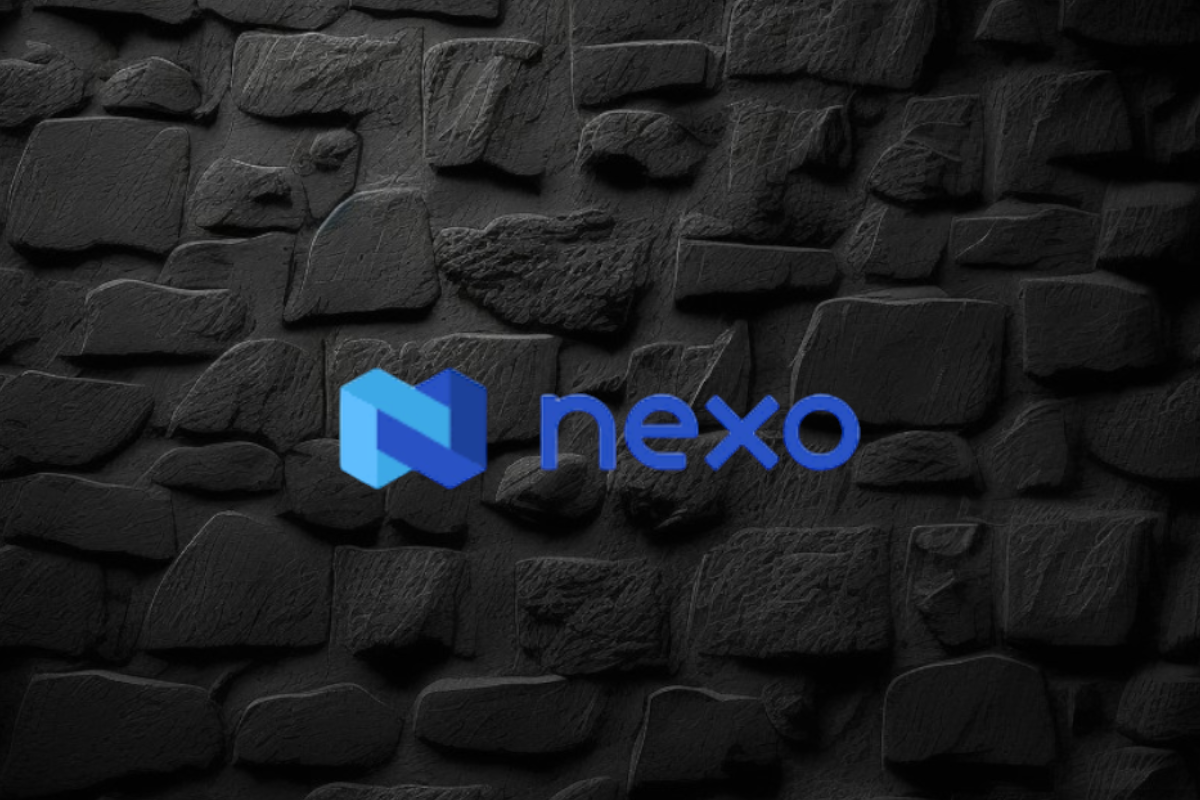
Nexo, a leading institution in the digital assets industry, has reinforced its commitment to data security by renewing its SOC 2 Type 2 audit and attaining a new SOC 3 Type 2 assessment without any exceptions. This rigorous audit process, conducted by A-LIGN, a respected independent auditor specializing in security compliance, confirms Nexo’s adherence to stringent Trust Service Criteria for Security and Confidentiality.
Key Achievements and Certifications
- SOC 2 and SOC 3 Compliance:
- SOC 2 Type 2: This audit evaluates and reports on the effectiveness of an organization’s controls over data security, particularly focusing on the confidentiality, integrity, and availability of systems and data.
- SOC 3 Type 2: This public-facing report provides a summary of SOC 2 findings, offering assurance to customers and stakeholders about the robustness of Nexo’s data security practices.
- Additional Trust Service Criteria:
- Nexo expanded the scope of these audits to include Confidentiality, showcasing a deep commitment to protecting user data.
- Security Certifications:
- The company also adheres to the CCSS Level 3 Cryptocurrency Security Standard, and holds ISO 27001, ISO 27017, and ISO 27018 certifications, awarded by RINA. These certifications are benchmarks for security management and data privacy.
- CSA STAR Level 1 Certification:
- This certification demonstrates Nexo’s adherence to best practices in cloud security, further solidifying its position as a trusted partner in the digital assets sector.
Impact on Customers and Industry Standards
Nexo’s rigorous approach to data protection and compliance sets a high standard in the digital assets industry. By achieving these certifications, Nexo provides its over 7 million users across more than 200 jurisdictions with confidence in the security of their data. These achievements not only emphasize the company’s dedication to maintaining top-tier security standards but also highlight its proactive stance in fostering trust and transparency in digital asset management.
Nexo’s Broader Mission
As a premier institution for digital assets, Nexo offers a comprehensive suite of services, including advanced trading solutions, liquidity aggregation, and tax-efficient credit lines backed by digital assets. Since its inception, the company has processed over $130 billion, showcasing its significant impact and reliability in the global market.
In summary, Nexo’s successful completion of SOC 2 and SOC 3 audits, along with its comprehensive suite of certifications, underscores its commitment to the highest standards of data security and operational integrity. This dedication positions Nexo as a leader in the digital assets space, offering unparalleled security and peace of mind to its users.
Source: blockchainreporter.net
The post Nexo Reaffirms Commitment to Data Protection with SOC 3 and SOC 2 Compliance appeared first on HIPTHER Alerts.
Blockchain
Marshall Becomes First US Senator to Walk from Controversial Crypto Bill He Co-Sponsored

Republican Senator Roger Marshall has withdrawn his support for the Digital Asset Anti-Money Laundering Act of 2023, a controversial bill he initially co-sponsored with Senator Elizabeth Warren and others. This bill, reintroduced in the Senate on July 27, 2023, aimed to bring the cryptocurrency industry into alignment with existing anti-money laundering (AML) and counter-terrorism financing (CTF) laws.
Key Provisions of the Bill
The legislation proposed stringent regulations on digital asset providers, including unhosted wallet providers, miners, and validators, by classifying them as financial institutions under the Bank Secrecy Act (BSA). It mandated these entities to adhere to BSA compliance requirements, which include extensive reporting and monitoring responsibilities. Additionally, the bill called for the Financial Crimes Enforcement Network (FinCEN) to establish regulations for reporting significant foreign digital asset holdings and to create compliance measures to address risks associated with anonymity-enhancing technologies.
Senator Marshall’s Shift
Marshall’s withdrawal from the bill comes as a surprise, particularly given his earlier criticisms of cryptocurrencies, which he has described as a “threat to national security.” This includes concerns over stablecoins like Tether potentially facilitating illegal activities and circumventing U.S. sanctions. Despite his earlier stance, Marshall’s departure from the legislation suggests a reconsideration of the bill’s implications or an alignment with broader political and industry perspectives on cryptocurrency regulation. His office has not provided a comment on the reasons for his withdrawal.
Political and Industry Reactions
The bill had garnered significant bipartisan support, with 18 co-sponsors, reflecting a broader concern in Congress over regulating the rapidly growing cryptocurrency market. However, it has also faced criticism for potentially imposing impractical compliance burdens that could stifle innovation and push crypto activities offshore. Critics argue that the bill’s stringent requirements could inadvertently drive users toward unregulated platforms, thereby undermining its intent to enhance security and regulatory oversight.
Broader Context
The withdrawal comes at a time when cryptocurrency regulation is a highly contentious issue in U.S. politics. Former President Donald Trump has promised to relax crypto regulations if elected, contrasting with the current administration’s more stringent stance. Under President Joe Biden, the Securities and Exchange Commission (SEC) and other regulatory bodies, led by figures like Gary Gensler, have taken a more rigorous approach to regulating the sector, which has drawn criticism for being overly restrictive.
Senator Marshall’s decision to step back from the Digital Asset Anti-Money Laundering Act reflects the complex and evolving nature of cryptocurrency regulation in the U.S. While the bill seeks to bring greater oversight and security to the crypto industry, it also raises concerns about regulatory overreach and its potential negative impact on innovation and privacy. As the debate continues, the U.S. legislative and regulatory landscape for cryptocurrencies remains in flux, balancing the need for security with the desire to foster technological innovation.
Source: decrypt.co
The post Marshall Becomes First US Senator to Walk from Controversial Crypto Bill He Co-Sponsored appeared first on HIPTHER Alerts.
-

 Blockchain4 days ago
Blockchain4 days agoBinance Cleared to Invest Customer Assets in US Treasury Bills: What It Means for Crypto and Dollar Dominance
-

 Blockchain4 days ago
Blockchain4 days agoDeep Custodian Limited Obtains Hong Kong TCSP License, Authorized to Provide Compliant Crypto Asset Custody Services
-

 Blockchain Press Releases2 days ago
Blockchain Press Releases2 days agoBybit Web3 Livestream Explores Cultural Meme Coins and Other Trends
-

 Blockchain3 days ago
Blockchain3 days agoBlockchain Intelligence Group adds additional modules and launches its Certified Cryptocurrency Investigator – Advanced Series
-

 Blockchain Press Releases2 days ago
Blockchain Press Releases2 days agoBybit Surges to Second Place in Derivatives Market, Solidifying Position as Global Crypto Trading Leader
-

 Blockchain3 days ago
Blockchain3 days agoBitAngels Network Hosts Blockchain Pitch Competition in Nashville
-

 Blockchain4 days ago
Blockchain4 days agoCoinW Continues Expedition Trek And Double Down On Presence At ETH-Native Events
-

 Blockchain2 days ago
Blockchain2 days agoKevin O ‘Leary Addresses Crypto Investing, Ethereum ETFs, and SEC Chair in Recent Interview






